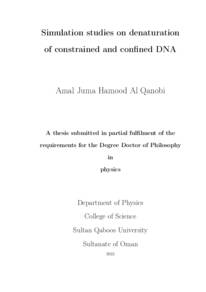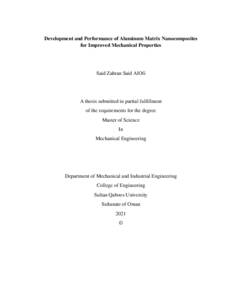Document
Simulation studies on denaturation of constrained and confined DNA.
Other titles
انصهار الحمض النووي في ظل ظروف مقيدة
Publisher
Sultan Qaboos University.
Gregorian
2022
Language
English
English abstract
We study the dynamics of double-stranded DNA (dsDNA) denaturation using Langevin dynamics simulations. We use a coarse-grained single nucleotide model for dsDNA which considers the helix structure. We compare the melting dynamics for free DNA of length 300 base pairs with that of a DNA of the same length but fixed from one
end, mimicking DNA tethered to a substrate. We find that free DNA, at its melting temperature of 70 melts at a faster rate compared to
that of a DNA fixed from one end. This is because the entropic gain
associated with denaturation of a free DNA is larger. Additionally, we
insert the DNA in nanochannels of different widths to study the influ ence of the confinement on the melting dynamics. Our results suggest
that there is no significant difference in the melting temperature or
rate of melting when the channel width > Rg/2, where Rg is the ra dius of gyration of DNA. However, at channel width of Rg/4 we only
see partial denaturation at the free DNA melting temperature because
of confinement entropic loss, and preference of attractive interactions
between the two DNA strands due to close proximity. Surprisingly,
this trend is reversed at higher temperature, and we find that tight
confinement at 110 C results in faster melting. This is due to the
fact that confinement promotes segregation of the single-stranded seg ment, thereby acting as an effective entropic force aiding denaturation
in a similar fashion to chromosome segregation in bacterial cells.
We also study the bubble formation during the melting process.
We find that small bubble sizes are most prevalent.
Member of
Resource URL
Category
Theses and Dissertations


